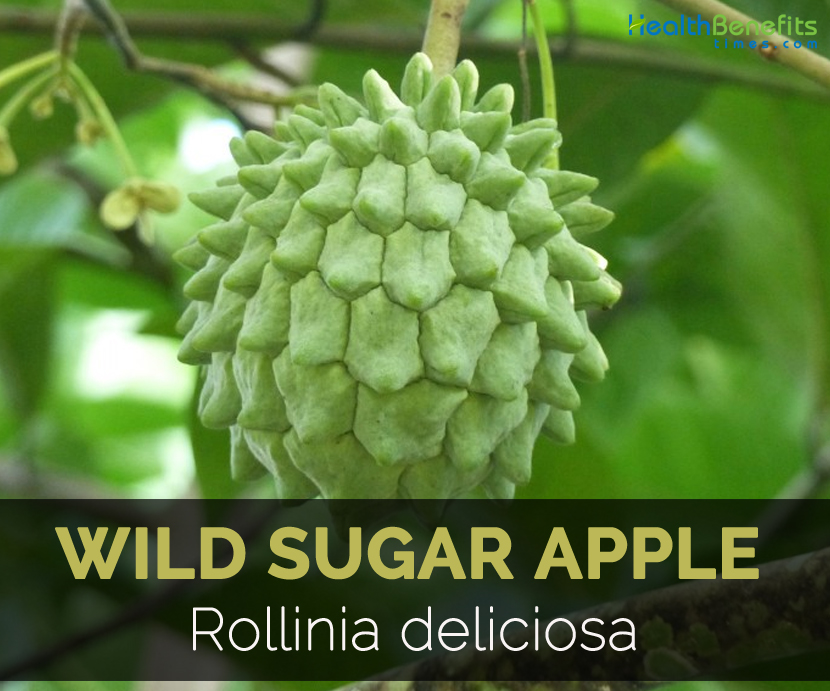| Wild Sugar Apple Quick Facts | |
|---|---|
| Name: | Wild Sugar Apple |
| Scientific Name: | Rollinia deliciosa |
| Origin | Tropical South America |
| Colors | Green to yellow |
| Shapes | Oblong-cylindrical (5-8 cm by 10-15 cm long), cordate, obovate to oblate (6.5-12.5 diameter) |
| Taste | White, mucilaginous, translucent |
History
Wild Sugar Apple is originated in Northern Brazil along the banks of Amazon. It is found in natural state in Guiana, Peru, Southern Mexico and Northern Argentina. In early 1900s, seeds were sent to Florida and the Philippines. It is grown in most tropical locations which has rapidly become a favorite with tropical fruit aficionados.
Wild sugar apple is deciduous, vigorous and small to medium sized tree which grows to the height of 4 to 15 meters with brown pubescent branchlets. Leaves are medium green, alternate, oblong-elliptic or ovate-oblong measuring 10-25 cm long by 4-12 cm wide having pointed apex and obtuse to rounded base and entire margin somewhat coriaceous and pubescent underside. Flowers form in 1 to 3 clusters at axils of leaves about 2 to 3.5 cm across. Fruits have variable shape, oblong-cylindrica about 5-8 cm by 10-15 cm long or cordate, obovate to oblate about 6.5-12.5 diameter having leathery, tough and rough rind which becomes yellow when ripened. Pulp is white, translucent,, mucilaginous, juicy and subacid to sweet taste. It has an opaque-white core having numerous dark-brown seeds which is elliptic or obovate about 1.6 to 2 cm.
Leaves
Leaves are deciduous, alternate and oblong-elliptic or ovate-oblong pointed at apex, rounded at base measuring 10-25 cm long.
Flowers
Flowers from 1 to 3 in leaf axils, hermaphroditic, about 3/4-1 3/8 in (23.5 cm) and triangular with three large fleshy outer petals and three rudimentary inner petals.
Fruits
Berries are succulent and sweet pulp having seeds having inconsistent shape turning green to yellow when ripe.
Traditional uses
- Powdered seeds are used as a remedy for enterocolic disorder.
- Leaves are used against rheumatism.
Culinary uses
- Fruit pulp is used in desserts, processed into refreshing drinks, ice creams and fermented to make wine.
- In Brazil, fruit is consumed fresh or fermented to make wine.
- It is used to make juice, ice cream and milkshakes.
- Consume it fresh or made into raw desserts or smoothies.
- Use it to make jams, pickles, jellies and chutneys.
References:
https://en.wikipedia.org/wiki/Rollinia_deliciosa
https://hort.purdue.edu/newcrop/morton/biriba.html
https://www.fruitsinfo.com/Rollinia-Exotic-fruits.php
Comments
comments
